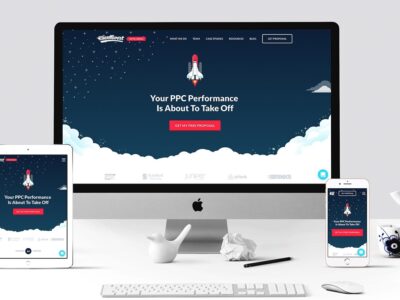Have you forgotten your wallet at home and still fancy a cool, refreshing drink in the beer garden around the corner? Mobile payment or mobile payment is the magic word.
Nowadays, mobile payment systems enable completely new leeway in the consumer behavior of customers and can thus offer new founders, but also long-standing entrepreneurs, an option with great potential compared to the classic cash register. We give you an insight into the topic of mobile payment and thus help you to assess the associated challenges for your own company.
Mobile payment: what is it anyway?
We all know the procedure: We pack the shopping cart full, take it to the checkout and wait for our turn. The products from the shopping cart are scanned and we pay either in cash or by card. But it is precisely this familiar process that could disappear in more and more shops in the future. The magic word is mobile payment. The term is understood to mean contactless and cashless payment with mobile devices. No stationary cash register is required for this payment method.
But what exactly is behind the term and what potential does this new form of payment hold for you as an entrepreneur?
And how does it work?
Do you know the problem? You are standing at the cash register and have to laboriously collect your change or the EC card does not work again. Thanks to mobile payment, that could soon be history for consumers. A purse is no longer needed here, let alone a money card. The only thing that has to be pulled out is the smartphone with the app installed on it.
Mobile payment is not only more convenient for consumers – you as a retailer can also benefit from the new payment method. Since the consumer always has his smartphone with him, for example, those customers who are in the vicinity of the store can be targeted with discount campaigns by means of geotargeting. Mobile payment therefore opens completely new doors: a payment method that meets your needs as well as customer wishes with regard to an enhanced shopping experience.
Two methods can typically be used for mobile payment:
The NFC method
With so-called Near Field Communication (NFC), contactless data exchange can take place with two NFC-enabled end devices, such as a payment terminal and a smartphone. Depending on the app, the corresponding amount is debited either by direct debit from your own account or a rechargeable credit account. As a rule, payments for amounts of up to 25 euros can be made without an additional security query. For larger amounts, a PIN must be entered or confirmation by fingerprint.
The QR code
As an alternative to the NFC method, mobile payment can also be made by scanning a QR payment code. The QR code is first scanned on an invoice or directly at the checkout. Finally, the payment data stored in the app is read in via the code and the amount due is debited, for example by direct debit or PayPal. Since Internet access is absolutely necessary with this method, it is still not very practical for many users.
And what do you need as an entrepreneur?
If you want to establish mobile payment for your customers in your shop or restaurant, the process is very simple: you register with the provider of your choice, download the required app on your smartphone, store your data and your bank details and then receive a suitable card reader sent. This is simply plugged into the headphone input of your smartphone or connected via Bluetooth.
In practice it looks something like this:
- Your POS system transmits the invoice amount and the IBAN ID to the customer’s smartphone app via NFC or QR code.
- Your payment service provider or your deposited bank will be informed of the expected incoming payment.
- The app transfers the recipient IBAN and amount to your customer’s bank.
- The amount received is transferred to the system at the POS.
- Finished. Payment made.
If you decide on mobile payment, you should ideally choose an experienced provider for the cash register system who offers everything from the mobile card reader to the app and the receipt printer.
Mobile payment also as a cash register system
Easy, quick and uncomplicated shopping: this is important to consumers nowadays, and not just online. So if brick-and-mortar retail wants to survive alongside booming online retail, it must not escape this development. One building block in this process is the conversion of the cash register systemson modern, mobile devices. With them, tomorrow’s retail trade can look like this: the customer is interested in a product, the seller comes to the customer with his mobile POS system and has access to further information about the product in which the customer is interested via a smartphone. The seller can advise directly and encourage the customer to buy. If the customer decides to buy, they can pay directly thanks to mobile payment, without long queues at the checkout.
Mobile payment: advantages and disadvantages
The emphasis is still on “The retail trade CAN look like this”. According to Statista , mobile payment has not yet really caught on in Germany. Supermarkets such as Edeka do offer payment by mobile phone, but the number of users is still very low. And so far there is some evidence that mobile payment in this country will not bring the hoped-for success in the medium term.
We took a closer look at the advantages and disadvantages of mobile payment from the entrepreneur’s point of view:
advantages
- flexibility
- Increase in sales through impulse purchases
- Can be used regardless of time and location
- Low implementation and operating costs
- Exclusion of counterfeit money
disadvantage
- Less transparency on the part of customers regarding their expenses
- Security concerns from customers
- Privacy concerns
In summary, it can be said that from the entrepreneur’s point of view, the advantages clearly outweigh the advantages. If you want to be successful in the future as well, you should deal more intensively with the possibilities of mobile payment and thus face the new customer requirements. Because customers want to be served faster and more personally. This also has an impact on the checkout area and the payment process.
Mobile payment provider
There are now some providers on the market who want to enable mobile payment in Germany. However, the technology is still quite young, so there are numerous different concepts for which it is not yet clear which one will ultimately prevail for the masses.
Regardless of which provider you ultimately choose, certain devices and possibly configurations are required so that you can use mobile payment in your business. Your cash register must meet certain requirements for mobile payment in order to receive customer data and forward it to your bank. It may be the case that you have to make changes to the configuration of the POS software in order to enable mobile payment. Most banks already support contactless payments. However, changes may need to be made to your merchant account in order for these payments to be accepted. You will also need an NFC-enabled reader.
We would like to introduce you to three providers with which you can offer mobile payment in your business:
Google Pay – the classic
In this country, mobile payment has not really picked up speed yet, but that could change quickly thanks to Google Pay. The service aimed at users of the Android mobile phone operating system has been officially available in Germany since mid-2018. Paying is very easy for consumers: unlock the smartphone, hold the back against the card reader at the checkout and that’s it. As with most mobile payment providers, the app clearly shows when you made which purchase and in what amount. The provider acknowledges the security concerns of many users with the protection of personal data, because instead of the card details, only an encrypted code is transmitted. The app works with credit cards from participating banks on all NFC-enabled Android devices.
Payback Pay – smart and fast
Shop smarter, checkout quickly – that is the slogan of the well-known mobile payment provider. In addition to mobile payment, the app can also be used to collect Payback points automatically. Well-known partners with whom you can pay on the go are, for example, the supermarket giants Penny and REWE. Either a pin or fingerprint is required to approve the payment at the terminal, scan the QR code and mobile payments can be made in no time at all. A confirmation of the payment made is stored in the app and can be viewed at any time.
Cashcloud – contactless payments thanks to the NFC sticker
This provider can also be used to pay conveniently using a smartphone. With a freemium account, € 100 per month can be found on the virtual account and conveniently paid with it. For more options, you can upgrade to a premium account at any time. Of course, account movements can also be viewed here at any time. The app can be used in all EU countries.
The following applies to all providers: check your existing cash register system for the necessary requirements. The customer only ever needs one corresponding app, but you must have the necessary tools at hand in order to be able to offer customers this payment method.
Mobile payment: challenges
New founders and small entrepreneurs in particular cannot and do not want to afford an expensive cash register system at the beginning of their self-employment, so mobile payment comes in handy. Because there is cash register software that can be connected to the smartphone and on top of that provides an inventory management system and, if necessary, also has a connection to an online shop.
But good technology alone is not enough to master the challenges. The purpose for which it is to be used is important for the use of a mobile cash register system. This varies from company to company, depending on the size and range. Is your target group even smartphone-savvy? Is there enough network in your shop so that the payment process runs smoothly? You should ask yourself these and other questions if you want to offer mobile payment in your business.
Mobile payment is the future
Digitization continues to advance and does not leave our payment methods unaffected. Mobile payment is convenient, easy and fast. In many countries it is already part of everyday business, like WhatsApp is part of daily communication. Even if many consumers still have security concerns, the fact is that being able to pay conveniently and cashless is now taken for granted by many guests. Companies that do not prepare for this miss out on customers and sales. Entrepreneurs therefore have to be prepared for the fact that mobile payment is becoming more and more important in this country and that customers will at some point take it for granted that they will be able to pay with their smartphone.
So the question arises for the founders and owners of shops, restaurants or bars, how they should deal with the topic of mobile payment. In order to keep up with the competition, it will therefore be necessary to offer mobile payment in your own business. Therefore, find out directly which POS software will not get in your way here.




















Comments